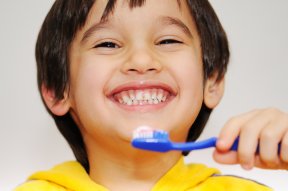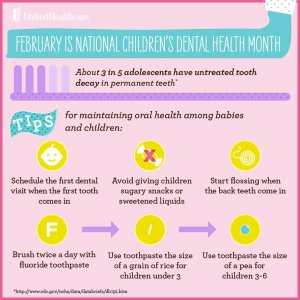
By: Dr. Richard P. Klich, chief dental officer, UnitedHealthcare
Edited by Lawndale Bilingual Newspaper
February is National Children’s Dental Health Month, a reminder that good oral health is important to good overall health. Tooth decay is largely preventable, yet it ranks as the most common chronic disease among children, according to the Centers for Disease Control and Prevention (CDC). Approximately 33 percent of young kids (ages 2 to 8) have cavities in their baby teeth, and 20 percent of kids in the same age group have cavities in their adult teeth, according to the CDC. A survey by The Pew Center on the States gave just over half of the 50 states grades of “A” or “B” for managing children’s oral health based on key measures such as optimally fluoridated water and availability of school-based dental programs. Illinois earned a “B” grade. Some people believe baby teeth are not overly important, yet decay in baby teeth can lead to speech problems, oral infections and damaged adult teeth, according to the CDC. It’s important to keep baby teeth healthy and in place to help permanent teeth come in properly. Maintaining proper oral health among children is helped by following these tips:

For baby’s teeth and gums:
- Never put baby to bed with a bottle of milk, formula, fruit juice or sweetened liquid. When these liquids pool in a baby’s mouth, they form a sugary film on the baby’s teeth, leading to decay and infection.
- Starting at birth, clean the baby’s gums with water and a soft cloth or child-sized tooth brush. Once a child reaches age 2, parents can start brushing a baby’s teeth with a soft bristled toothbrush and a smear-sized dab of fluoride toothpaste (no larger than a grain of rice), making sure to teach the toddler to spit out the toothpaste.
- Schedule the baby’s first dental visit when the first tooth comes in, usually between the child’s first six to 12 months.
For children’s teeth and gums:
- Help your child brush twice a day with a small amount of fluoride toothpaste; for children ages 3 to 6, this means a pea-sized dab. Make sure your child does not swallow toothpaste, which may expose them to too much fluoride.
- Begin flossing when back teeth begin to come in. Toothbrush bristles cannot reach between teeth, leaving those teeth vulnerable to bacteria and decay.
- Limit sugary snacks and drinks between meals. When sugar comes in contact with teeth, decay-causing bacteria can produce acids that damage your child’s teeth. Encourage children to eat healthy snacks, such as fruits and vegetables.












